Abstract
Human platelet phenolsulphotransferase exists in two functional forms. M and P. In this study the substrate specificity of the two forms has been further delineated by correlating activities in different individuals with various substrates. m-Tyramine, noradrenaline, adrenaline, 5-hydroxytryptamine, p-hydroxyamphetamine, isoprenaline, salbutamol and l-naphthol were all specific substrates for the M form of the enzyme. Paracetamol, a mixed substrate, was predominantly metabolized by the M form. Salicylamide at 5 microM was a substrate for the P form but became and M substrate at higher concentration. Phenol itself, a specific substrate for phenolsulphotransferase P at 10 microM, also became an M substrate at 1 mM concentration. These substrate specificities were confirmed with the selective inhibitor, dichloronitrophenol. In this study, we measured phenolsulphotransferase activity in platelets from 13 individuals selected on the basis of their wide variation in ability to sulphoconjugate paracetamol and salicylamide in vivo. There was no significant relationship between the in vivo pattern with either drug and the activity of platelet phenolsulphotransferase assayed with paracetamol or salicylamide respectively.
Full text
PDF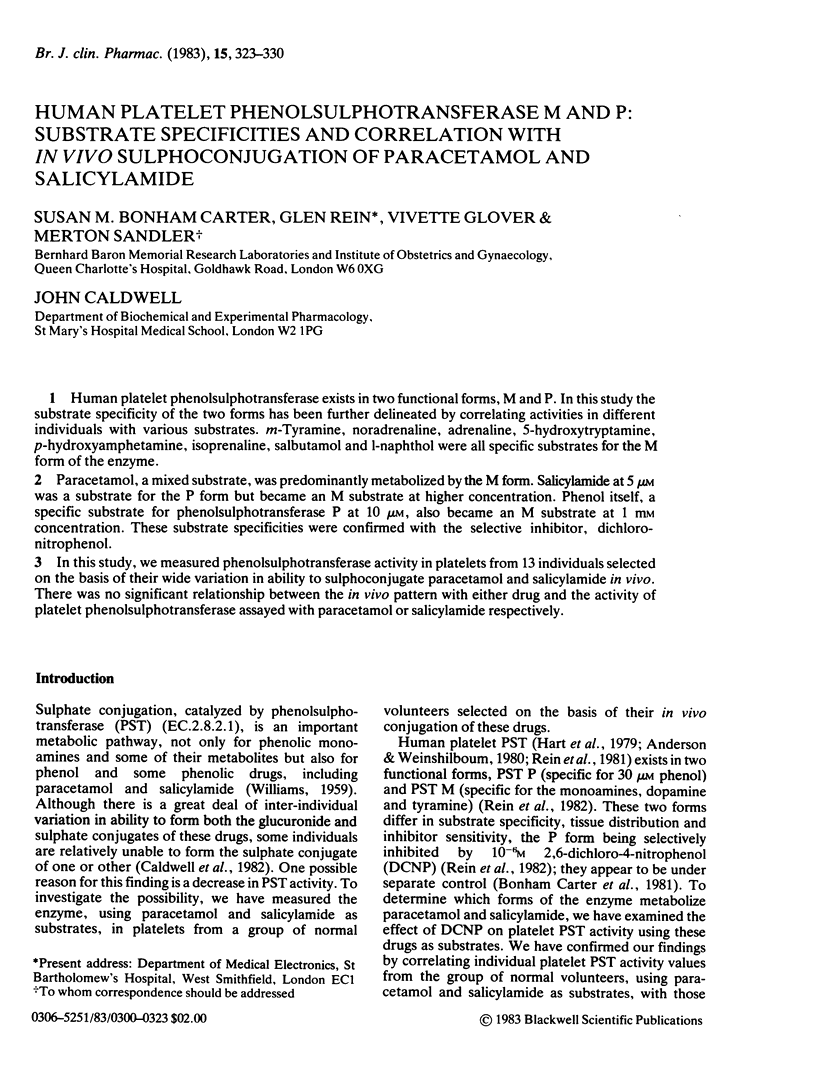
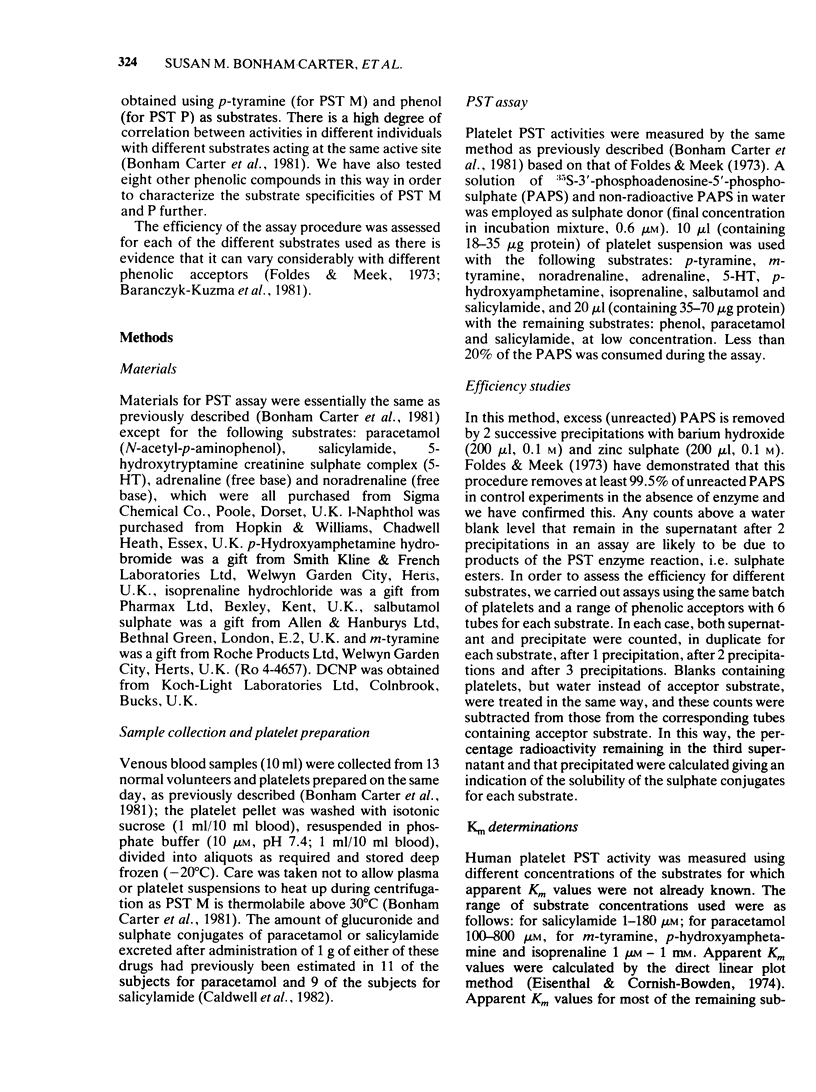
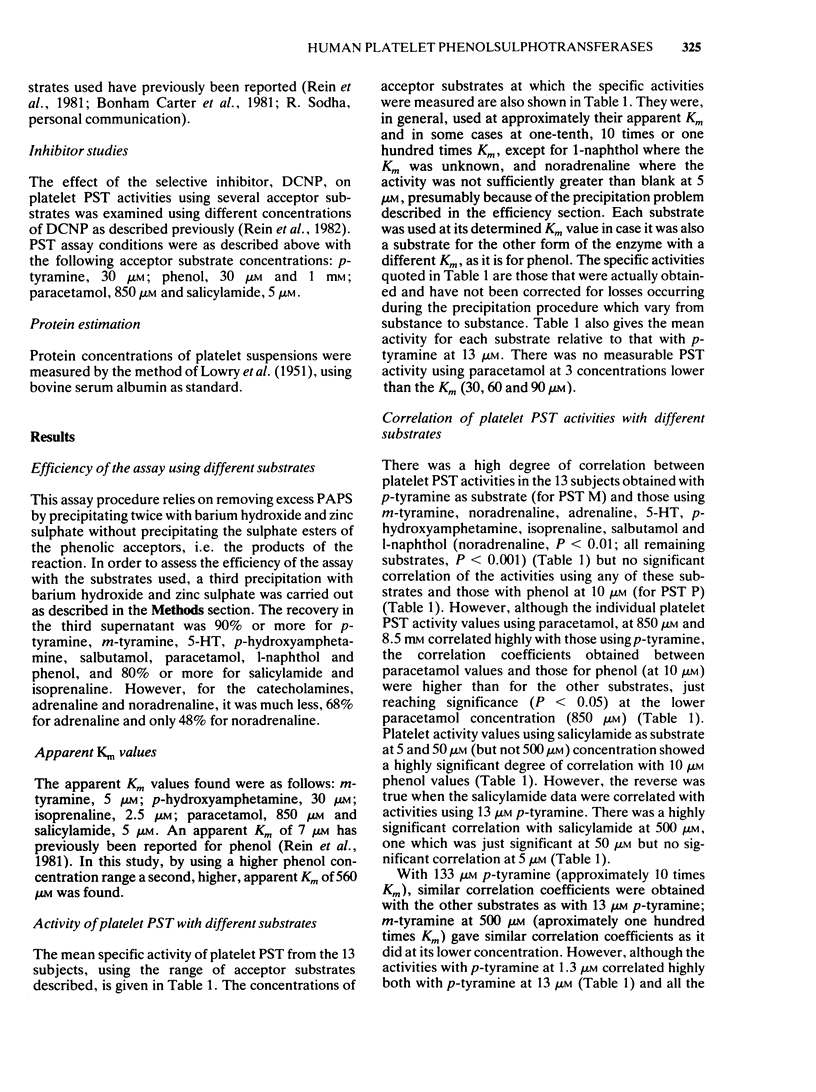
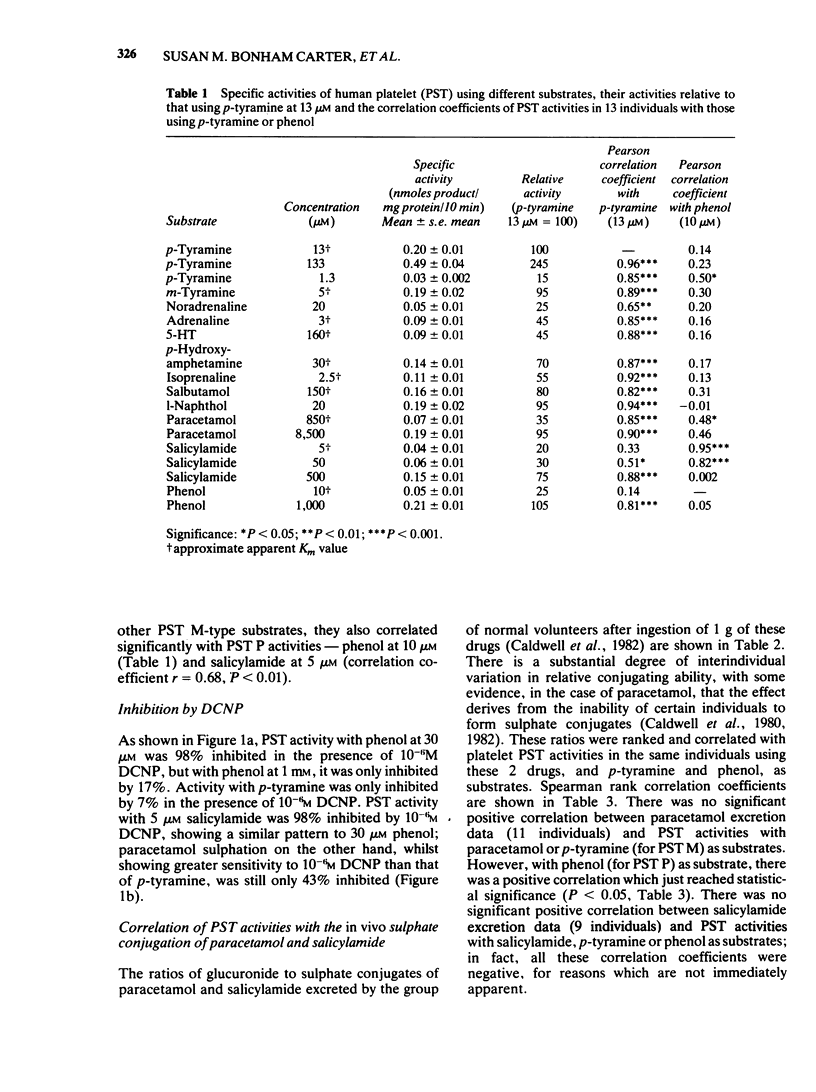
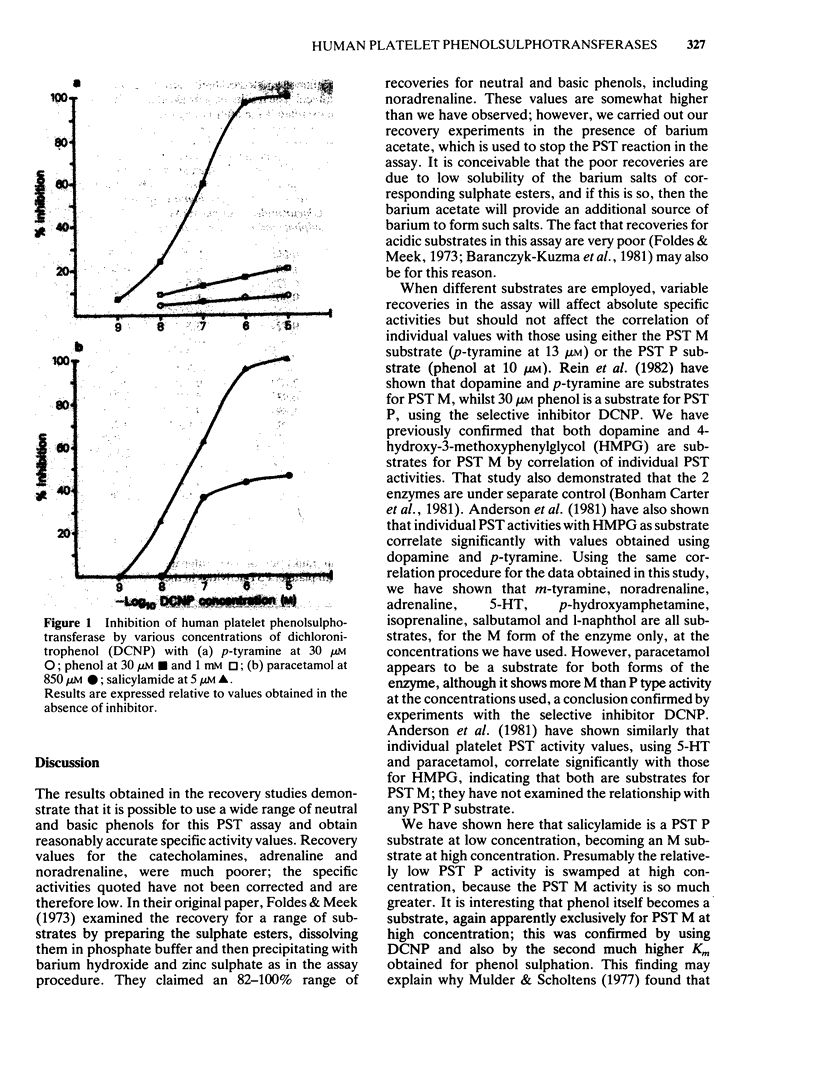
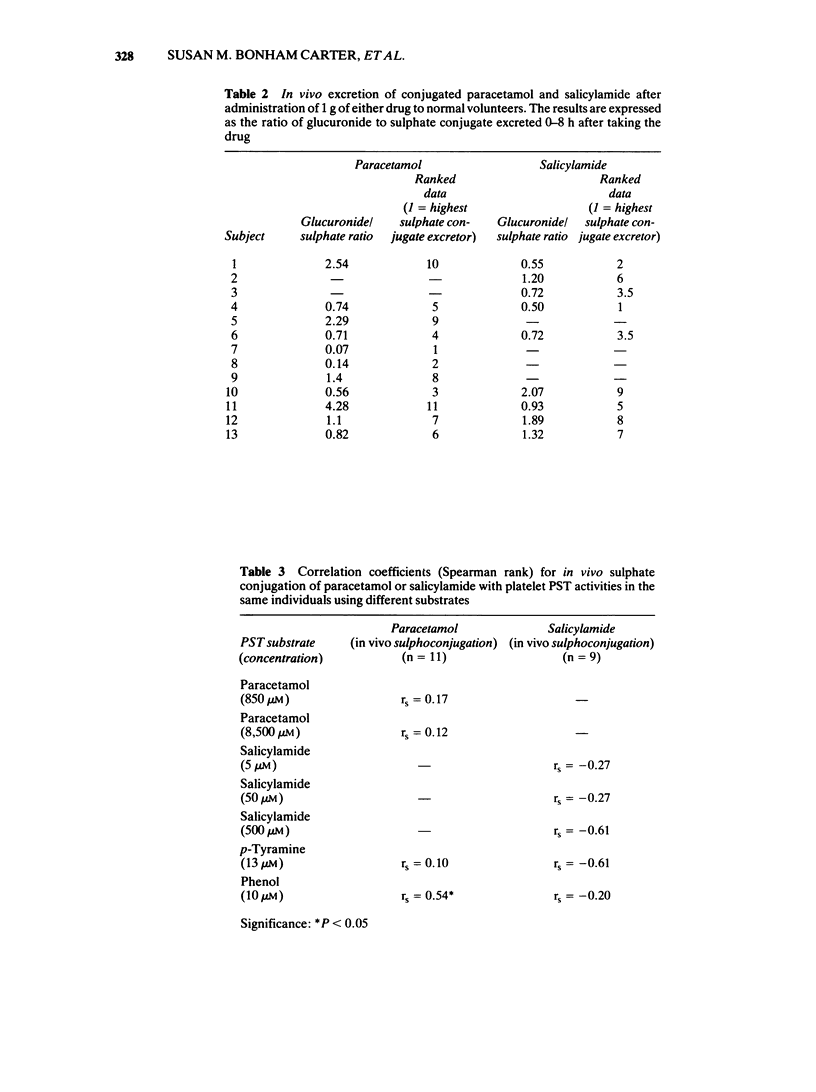
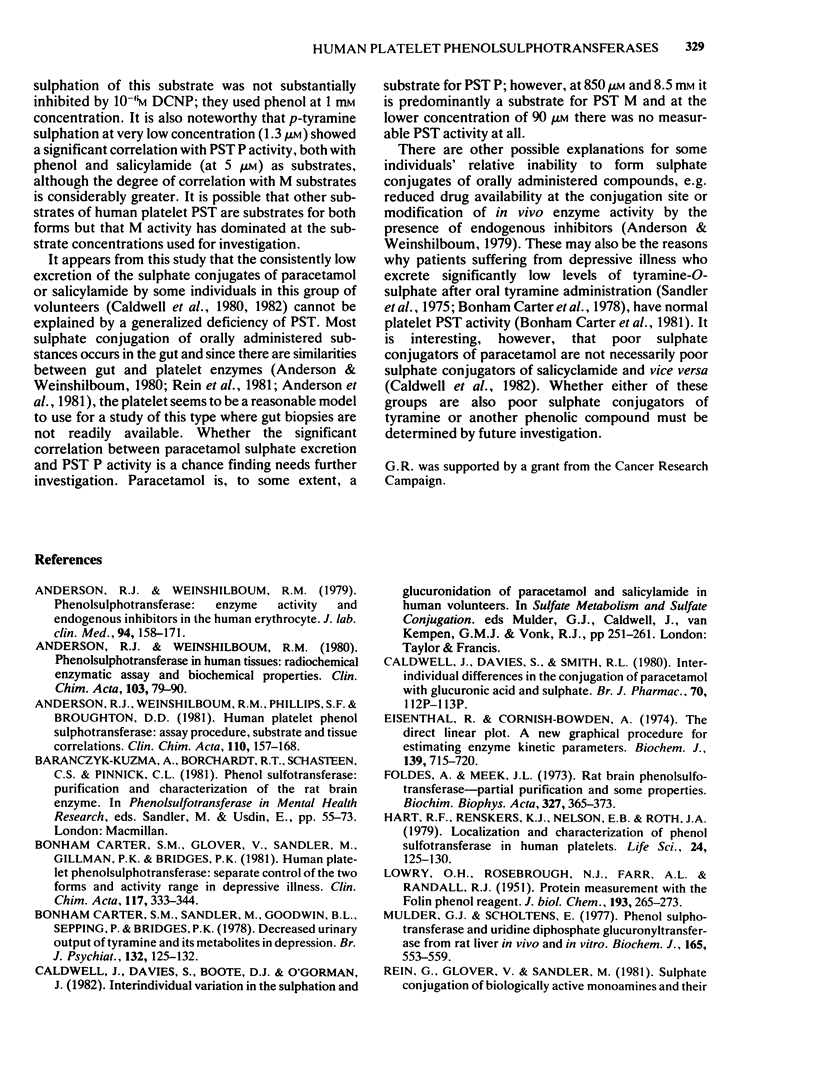
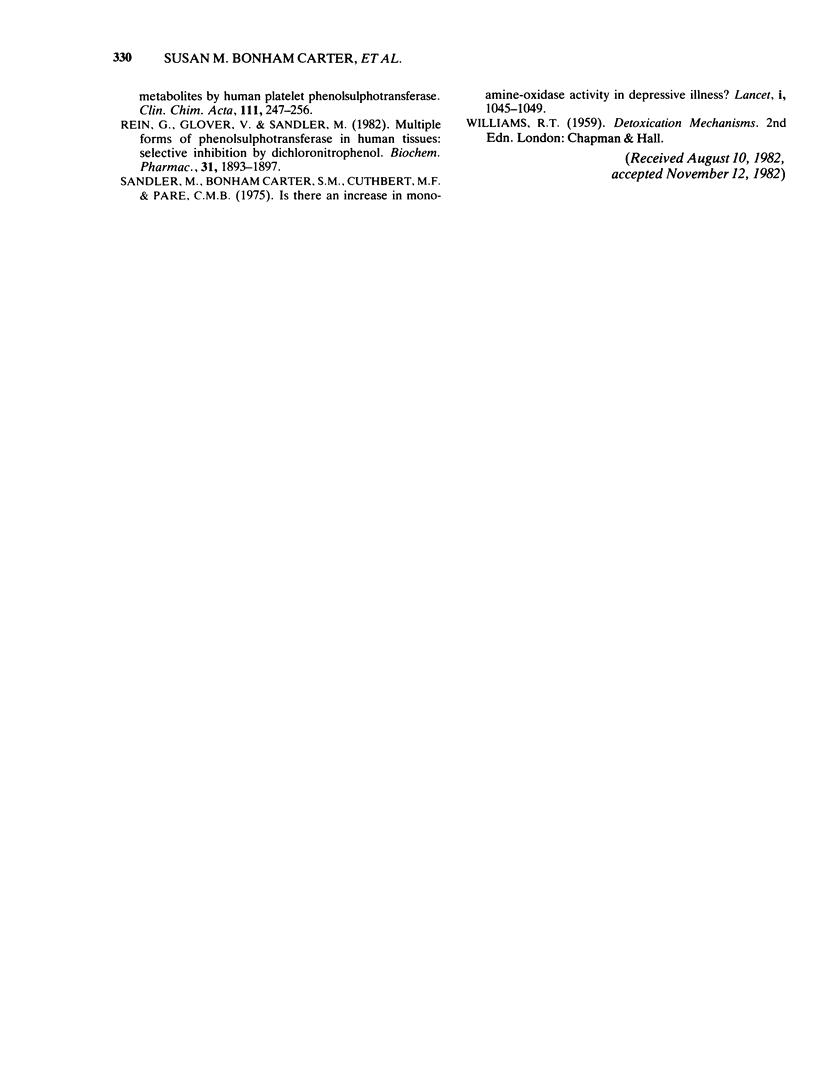
Selected References
These references are in PubMed. This may not be the complete list of references from this article.
- Anderson R. J., Weinshilboum R. M. Phenolsulphotransferase in human tissue: radiochemical enzymatic assay and biochemical properties. Clin Chim Acta. 1980 Apr 11;103(1):79–90. doi: 10.1016/0009-8981(80)90233-8. [DOI] [PubMed] [Google Scholar]
- Anderson R. J., Weinshilboum R. M. Phenolsulphotransferase: enzyme activity and endogenous inhibitors in the human erythrocyte. J Lab Clin Med. 1979 Jul;94(1):158–171. [PubMed] [Google Scholar]
- Anderson R. J., Weinshilboum R. M., Phillips S. F., Broughton D. D. Human platelet phenol sulphotransferase: assay procedure, substrate and tissue correlations. Clin Chim Acta. 1981 Mar 5;110(2-3):157–167. doi: 10.1016/0009-8981(81)90345-4. [DOI] [PubMed] [Google Scholar]
- Carter S. B., Sandler M., Goodwin B. L., Sepping P., Bridges P. K. Decreased urinary output of tyramine and its metabolites in depression. Br J Psychiatry. 1978 Feb;132:125–132. doi: 10.1192/bjp.132.2.125. [DOI] [PubMed] [Google Scholar]
- Carter S. M., Glover V., Sandler M., Gillman P. K., Bridges P. K. Human platelet phenolsulphotransferase: separate control of the two forms and activity range in depressive illness. Clin Chim Acta. 1981 Dec 24;117(3):333–344. doi: 10.1016/0009-8981(81)90121-2. [DOI] [PubMed] [Google Scholar]
- Eisenthal R., Cornish-Bowden A. The direct linear plot. A new graphical procedure for estimating enzyme kinetic parameters. Biochem J. 1974 Jun;139(3):715–720. doi: 10.1042/bj1390715. [DOI] [PMC free article] [PubMed] [Google Scholar]
- Foldes A., Meek J. L. Rat brain phenolsulfotransferase: partial purification and some properties. Biochim Biophys Acta. 1973 Dec 19;327(2):365–374. doi: 10.1016/0005-2744(73)90419-1. [DOI] [PubMed] [Google Scholar]
- Hart R. F., Renskers K. J., Nelson E. B., Roth J. A. Localization and characterization of phenol sulfotransferase in human platelets. Life Sci. 1979 Jan 8;24(2):125–130. doi: 10.1016/0024-3205(79)90121-8. [DOI] [PubMed] [Google Scholar]
- LOWRY O. H., ROSEBROUGH N. J., FARR A. L., RANDALL R. J. Protein measurement with the Folin phenol reagent. J Biol Chem. 1951 Nov;193(1):265–275. [PubMed] [Google Scholar]
- Mulder G. J., Scholtens E. Phenol sulphotransferase and uridine diphosphate glucuronyltransferase from rat liver in vivo and vitro. 2,6-Dichloro-4-nitrophenol as selective inhibitor of sulphation. Biochem J. 1977 Sep 1;165(3):553–559. doi: 10.1042/bj1650553. [DOI] [PMC free article] [PubMed] [Google Scholar]
- Rein G., Glover V., Sandler M. Multiple forms of phenolsulphotransferase in human tissues: selective inhibition by dichloronitrophenol. Biochem Pharmacol. 1982 May 15;31(10):1893–1897. doi: 10.1016/0006-2952(82)90493-2. [DOI] [PubMed] [Google Scholar]
- Rein G., Glover V., Sandler M. Sulphate conjugation of biologically active monoamines and their metabolites by human platelet phenolsulphotransferase. Clin Chim Acta. 1981 Apr 9;111(2-3):247–256. doi: 10.1016/0009-8981(81)90192-3. [DOI] [PubMed] [Google Scholar]
- Sandler M., Carter S. B., Cuthbert M. F., Pare C. M. Is there an increase in monoamine-oxidase activity in depressive illness? Lancet. 1975 May 10;1(7915):1045–1049. doi: 10.1016/s0140-6736(75)91824-3. [DOI] [PubMed] [Google Scholar]


